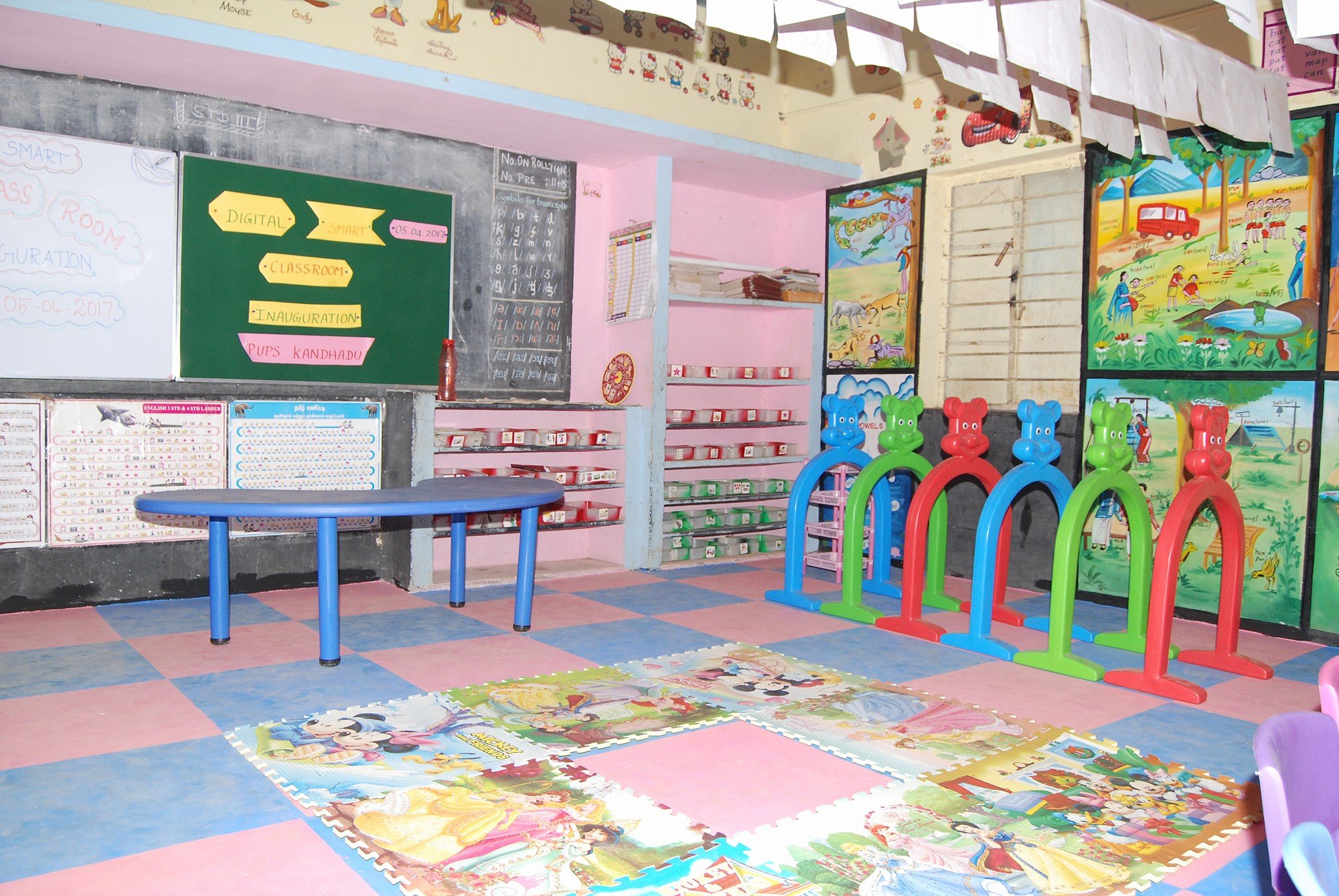
Tamil Nadu: A Teacher Who Has Changed The Infrastructure Of Her Classroom With Her Own Money
26 April 2017 10:41 AM GMT
Editor : Pooja Chaudhuri
The only fiction I enjoy is in books and movies.
Large windows on four walls of the room, wooden desks and chairs set in perfect alignment facing the blackboard, bags placed beside the chairs, and books neatly stacked on the desks – this is how I remember my grade 3 classroom when I was in school.
I don’t remember cheerful sketches hanging from the walls and the ceiling of the classroom, I don’t remember colorful chairs and desks, and I don’t remember a smartboard where we were taught via audio-visual mediums.
Most of us will have trouble believing that a government school classroom in Tamil Nadu has such infrastructure, but this how Annapurna Mohan’s classroom for standard 3 English in the Panchayat Union Primary School (PUPS), Kandhadu looks like.

Fulfilling a lifelong dream
“I asked myself – why is a poor man from a village spending lakhs of money to send his child to a private school when the government provides education free of cost?” said Annapurna speaking to The Logical Indian.
Annapurna had always dreamt of building a space for her students that gets them excited to come to school every day. This was when she decided to change the infrastructure of her classroom.
She asked the headmaster of PUPS if she could get funds to transform the learning space, but as she got no response, Annapurna decided to arrange for funds herself.
With an investment of more than a lakh, she installed new furniture, a digital smart board, and new floor in the classroom within three days. She also bought new books for her students.
She believes,
“When good infrastructure along with good education is provided to the children in government schools, parents will not feel the need to send them to private schools.”
In most government schools, students sit on mats on the ground, but Annapurna’s grade 3 classroom looks like a well-funded international school.

A different method of teaching English
Annapurna realised early on that government school teacher in the state were ill-equipped to properly teach English pronunciation. She identified the flaws in the existing system and decided to bring about a change.
In her classroom, she teaches English through phonetic sounds.
“Teachers don’t follow the right methodology of teaching English and this is why the language gets difficult for the students to grasp. Since English is not our mother-tongue, teaching through parroting makes it all the more tough for the students,” said Annapurna.
Since her students were accustomed to talk in their native language at home and in school, she too spoke in the same language to communicate with them. “This not only hampered the students’ education, but my knowledge of English was deteriorating too. So I decided to talk to my students in English whether they understood it or not,” she said.
Within three months time, the students started responding to her and presently, they speak crisp and proper English.

“English is a universal language and it is essential that the students who want to have good jobs in the future, learn it. Even in Tamil Nadu, a high position job requires the employee to have a good grasp of the language. And the ones who suffer the most, in this case, are government school students,” said Annapurna.
The other teachers of the school discouraged her and said that teaching the students phonetic sounds will be useless as they will go back to speaking their mother tongue in the other classes. But Annapurna did not lose hope. She saw the improvement in her students and was convinced that her method of teaching was helping them.
Currently, she teaches all five subjects to grade 3 students, but to maintain the standard of English when the students go to higher classes, she will be teaching the language to grade 4 and 5 students from the next session,
“I want them to be able to read proper English using phonetics in my absence too. This why I teach them using transcriptions. This helps the students find out the phonetic sound of a new word that they might come across” said Annapurna.
Response from people across the globe
Annapurna tries to make her classes more engaging by converting the lessons into short skits, which would then be re-enacted by the children.
When her students began responding to her the methods, Annapurna uploaded a video of a skit on her Facebook page. The video was widely shared, and encouraging words of support poured in from people across the country.
As she began to upload more such videos, people began sending in money and small gifts for her students.
A teacher from another government-aided school watched her video and was impressed at the way the children were responding. As a token of appreciation, he sent a Rs 10 money order to them.
“Even though it was only Rs 10, it gave me immense pleasure as the students signed the money order themselves and this gave them a sense of accomplishment”, she said with great content in her voice.
Responding to another video, a Facebook friend of hers from Singapore sent a badminton racquet to her student.
Acknowledgement from people across the country and the world gives Annapurna a higher motivation to keep doing the good work.
The Logical Indian community commends her will power to change the learning space of a government school, despite discouragement from her co-workers. Her love for her students and the desire to bring about a change in our country’s education system is an inspiration. We hope that states across India view this as an example to implement similar teaching methods in their schools.
 All section
All section















